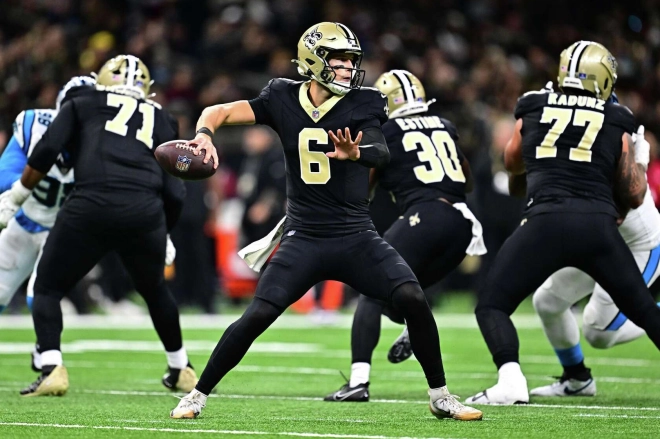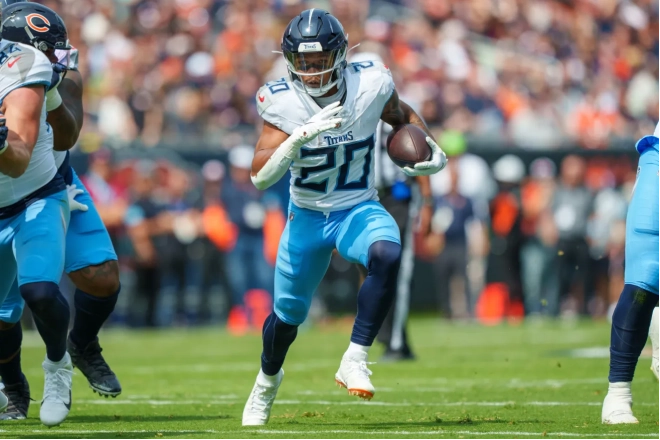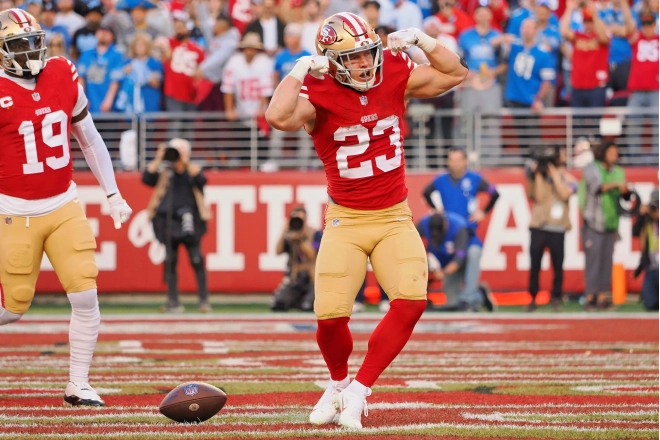If I had to isolate one specific area of lineup construction strategy that is the most overlooked in the DFS community it would be the ability to identify team regression. What do I mean by team regression as it relates to lineup construction and how do I identify it?
My definition of NFL team regression is best defined by evaluating a team’s results over a specific time frame and determining an outcome. For example, if a team has an extremely positive result over an initial designated time frame I should expect that those exceedingly positive results are most likely not going to continue which would result in a team’s results being closer to the median (average) moving forward. In summary, I should expect this team to have negative regression.
Can a team have positive regression? Absolutely. Let’s look at an NFL team that starts the season with one win and six losses. How could a 1-6 team have positive regression? If that team ranked high in the vast majority of offensive statistics for the season (through seven games), but also ranked number one in turnovers could they have better results moving forward? Yes. A single-point failure, such as a high turnover rate, is an issue a coaching staff can address more easily than if the whole offense were terrible. Therefore, it is statistically more probable that the team will continue to produce on offense and not continue to turn the football over at such a high rate resulting in positive regression in future games.
Why is identifying team regression a valuable tool when constructing multiple lineups for a large field Draftkings NFL GPP (guaranteed prize pool) contest? If a DFS player can identify a team that is likely to have positive regression, that can impact how an individual constructs DFS lineups for a large field Draftkings GPP contest.
Let’s utilize the ASL optimizer to construct DFS lineups for a large field Draftkings GPP (guaranteed prize pool) Classic NFL slate. As I construct the lineups using the ASL tools I will touch on an example of identifying likely positive regression for an NFL team and how that influences my lineup construction thought process.
First, let’s briefly look at the rules for a Draftkings Classic NFL contest.
In NFL salary cap contests, participants will create a lineup by selecting players listed in the designated Draftkings player pool. The DFS contestant will be tasked with constructing lineups consisting of nine skill players from the player pool provided: 1 QB, 2 WRs, 2 RBs, 1 TE, 1 DST, and 1 FLEX (WR, RB or TE).
Lineups must include players from at least two different NFL games. These are the basic rules. Additional rules for the Draftkings NFL Classic are available on the Draftkings website.
Now that we have reviewed the rules for the Draftkings NFL Classic contest let's evaluate a specific Draftkings NFL Contest featuring the Sunday-Monday slate of games.
Now that we have determined the rules for the Draftkings NFL Classic contest, let's shift our attention to my first step in the DFS multiple lineup construction process by accessing the ASL optimizer. In the image below, you will see the main screen of the ASL optimizer:
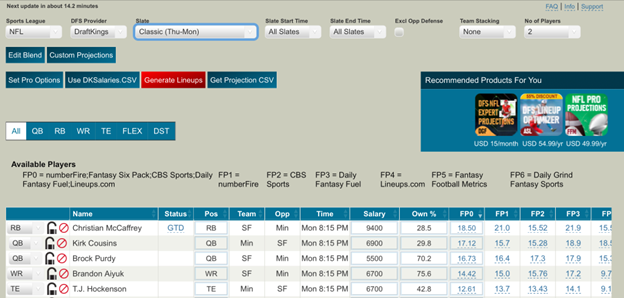
Next up, I look for the team regression I discussed earlier in this article. For me, the team that is set up perfectly for positive regression, at least offensively, is the Jacksonville Jaguars. Why do I see potential for positive regression for the Jaguars?
The Jaguars play the Houston Texans. The Jaguars are 1-4 in the team’s last five games against the Texans in which Trevor Lawrence has started. That includes a Jaguars loss to Houston earlier this year.
The Texans have struggled getting to the quarterback recently. Having stated that, Trevor Lawrence is one of the best quarterbacks in the league when defenses can’t get home. Additionally, when the Texans defense send blitz packages this season, the Texans aren’t getting to the quarterback much either.
Since week 6, Trevor Lawrence is sixth in EPA (Expected Points Added) per pass attempt. If the Texans cannot get pressure on Trevor Lawrence in this week’s game I see positive regression for the Jaguars offense.
For this week, I set Pro Options in the ASL optimizer in a way that exposed my lineups to at least 30% of Trevor Lawrence at QB. I also used the tool to ensure I had appropriate exposure to other Jaguars skill players (WR, TE, RB).
Lastly, now that I have entered the data, I request the optimizer to provide 10 lineups. The ASL optimizer allows you to enter a large number of lineups (up to 150) at one time with ease via a CSV.
The contest I selected was a 20 entry maximum Draftkings quarter contest. First prize was $100. In total, I spent only $2.50 to enter my 10 lineups.
I won a total of $4.00 back. The image below shows the Draftkings scattergram of my results:

As shown below, my best lineup finished 370th out of 5,752 entries:
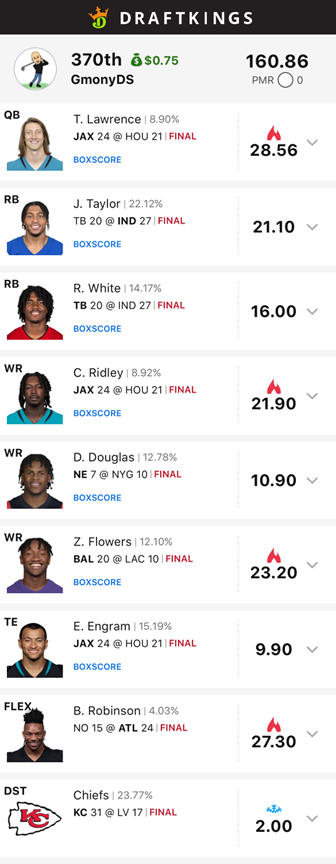
My belief that the Jaguars would have positive regression offensively did come to fruition. Trevor Lawrence and Jaguars wide receiver Calvin Ridley were the core that produced my best lineup in this large field contest. Until next time, continued good luck!

